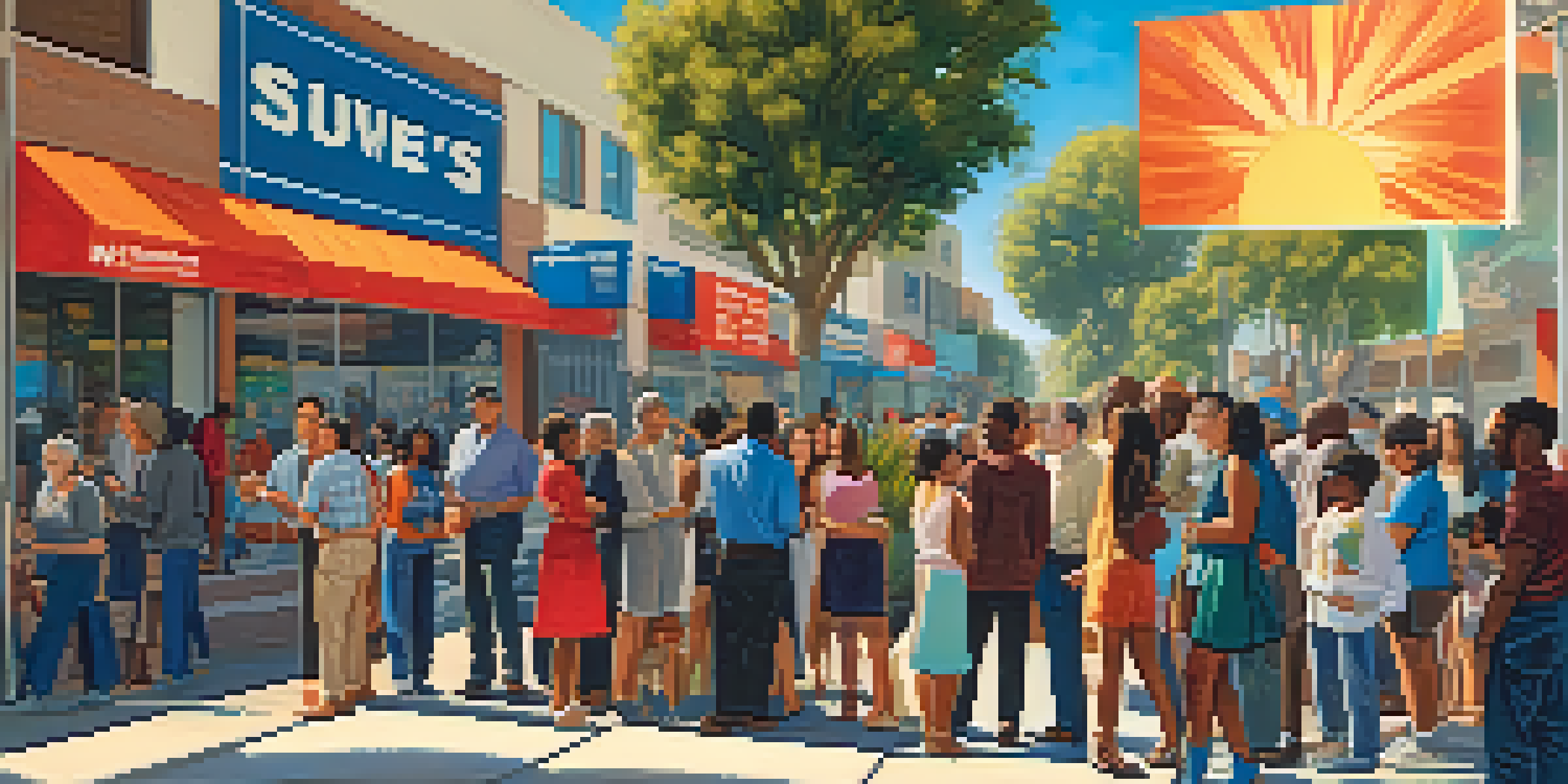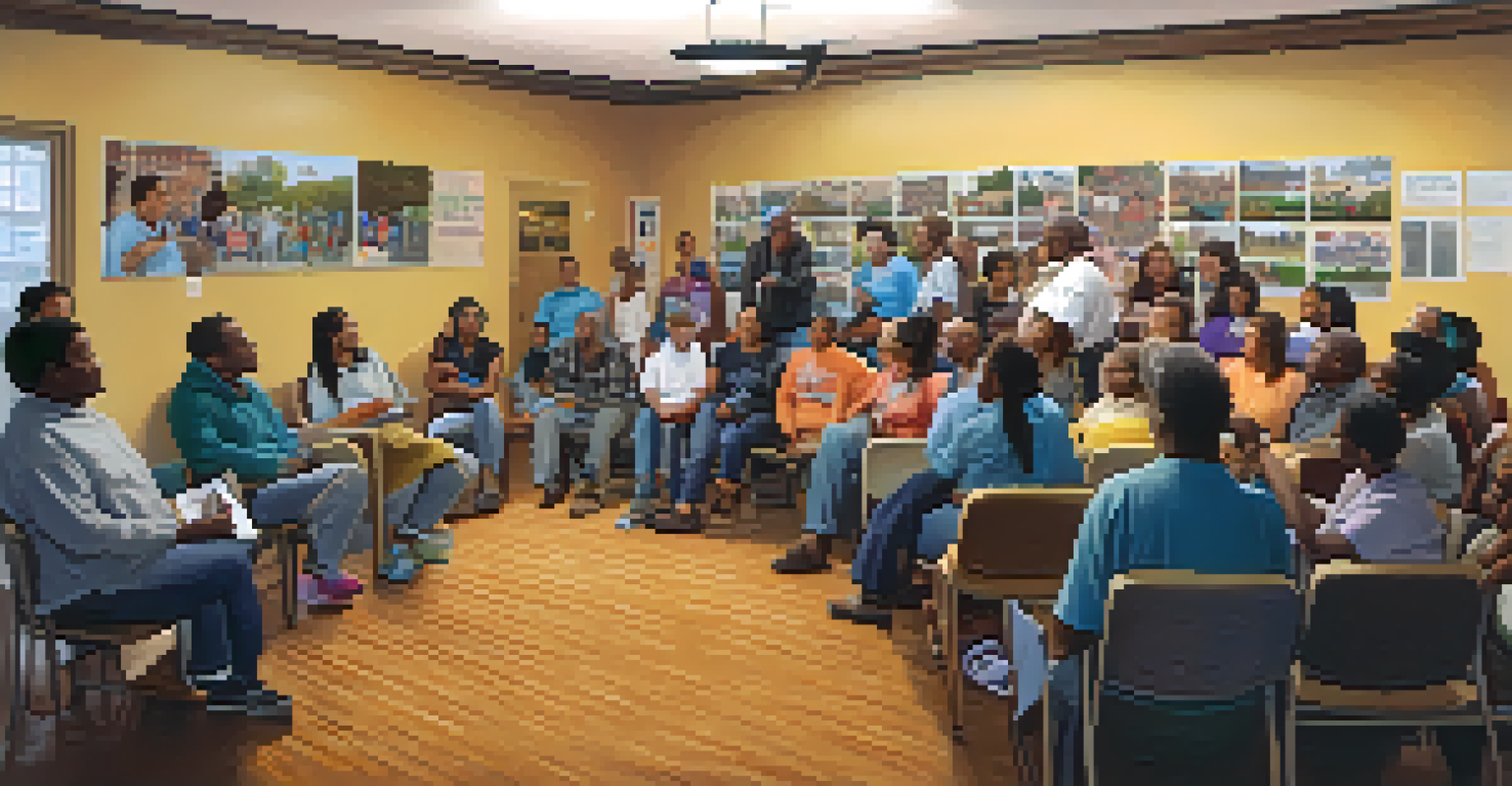Voter Participation Trends: Analyzing LA Elections Over Time

Understanding Voter Participation and Its Importance
Voter participation is a crucial aspect of any democracy, as it reflects the engagement of citizens in the electoral process. When more people vote, it strengthens the legitimacy of the elected officials and the policies they implement. In Los Angeles, understanding these trends can provide insights into the broader political landscape and the effectiveness of various outreach efforts.
The vote is the most powerful nonviolent tool we have in a democratic society.
Historically, voter turnout can fluctuate due to numerous factors such as demographics, socioeconomic status, and even the perceived importance of an election. For instance, presidential elections often see higher participation rates compared to local elections. By analyzing these trends in LA, we can identify patterns that reveal how different communities engage with the electoral process.
Moreover, examining voter participation helps to uncover systemic issues that may hinder engagement. This can include barriers such as lack of information, access to polling places, or even voter apathy. By addressing these concerns, Los Angeles can work towards a more inclusive electoral system that encourages everyone to have their say.
A Historical Snapshot of Voter Turnout in LA
To understand current trends, it’s helpful to look back at the history of voter turnout in Los Angeles. Over the decades, the percentage of eligible voters who participate in elections has seen significant fluctuations. For example, the 2008 presidential election marked a high point with approximately 73% participation, driven by enthusiasm for candidates and issues.

Conversely, local elections often witness much lower turnout rates, sometimes dipping below 20%. This discrepancy highlights a critical challenge: how to energize voters about local issues that directly affect their communities. Understanding these historical patterns allows us to pinpoint times of high engagement and moments of disconnection.
Voter Turnout Reflects Engagement
Higher voter participation strengthens democracy by legitimizing elected officials and their policies.
Moreover, the demographic shifts in Los Angeles over the years have influenced voter turnout as well. The city's growing diversity means that outreach strategies must evolve to address the needs and concerns of a multicultural electorate. Historical data can guide these strategies by revealing which communities are consistently engaged and which ones may need additional support.
Recent Trends in Voter Participation in LA Elections
In recent elections, Los Angeles has seen a notable uptick in voter participation, especially among younger populations. Initiatives aimed at engaging millennials and Gen Z, such as social media campaigns and on-campus voter registration drives, have proven effective. This shift suggests that innovative outreach methods resonate well with newer voters.
Voting is not only our right; it is our power.
However, despite the increase in turnout, challenges remain. Issues such as misinformation and voter suppression continue to impact participation rates. Addressing these challenges is essential for fostering a healthy democratic process, as every voice matters in shaping the future of the community.
Additionally, the COVID-19 pandemic has changed the way people approach voting, with many opting for mail-in ballots. This shift not only increased accessibility but also raised questions about future elections and how they will be conducted. Understanding these recent trends is vital for preparing for upcoming elections and ensuring continued voter engagement.
Demographic Influences on Voter Turnout in LA
Demographics play a significant role in voter turnout, particularly in a city as diverse as Los Angeles. Various factors, such as age, race, and income level, can influence whether individuals feel motivated to vote. For instance, younger voters tend to show lower participation rates compared to older generations, although recent trends indicate a shift in this pattern.
Moreover, minority groups have historically faced barriers that impact their voting rates, such as language obstacles or limited access to polling places. Understanding how these demographic factors affect turnout is crucial for developing targeted strategies that encourage participation among underrepresented communities. By fostering inclusivity, LA can work towards a more equitable electoral process.
Demographics Influence Voting Trends
Age, race, and income significantly impact voter turnout, highlighting the need for targeted outreach in diverse communities.
As the city continues to evolve, addressing these demographic influences will be key in shaping future elections. Tailoring outreach efforts to resonate with diverse communities can lead to increased engagement and a more representative electorate. Ultimately, a deeper understanding of these factors can enhance the overall health of democracy in Los Angeles.
The Impact of Local Elections on Voter Engagement
Local elections often receive less attention than presidential races, yet they have a profound impact on voter engagement. These elections determine local leadership and influence policies that affect daily life, from education to public safety. Therefore, increasing awareness about the importance of local elections can play a significant role in boosting turnout.
Engaging with communities to highlight local issues can motivate residents to participate in these elections. For example, initiatives that showcase how a local measure impacts schools or public transport can resonate deeply with voters. This connection is vital for fostering a culture of participation that extends beyond major elections.
Additionally, the role of grassroots organizations in mobilizing voters for local elections cannot be overstated. These groups often work tirelessly to educate residents about their rights and the electoral process. By collaborating with such organizations, local governments can enhance outreach efforts and ultimately increase voter engagement.
Technological Advancements and Their Role in Voting
Technology has transformed many aspects of our lives, and voting is no exception. The introduction of online voter registration and the use of social media for outreach have made it easier for residents of Los Angeles to engage with the electoral process. These advancements have the potential to break down barriers and increase participation, especially among younger voters.
Moreover, technology can play a vital role in combating misinformation, a significant barrier to voter participation. By leveraging digital platforms to provide accurate information about the voting process and candidates, organizations can empower voters to make informed decisions. This proactive approach is essential for maintaining trust in the electoral system.
Local Elections Drive Civic Engagement
Increasing awareness of local elections can motivate residents to participate, as these races directly affect their daily lives.
However, the reliance on technology also raises concerns about accessibility. Not everyone has equal access to the internet or digital devices, which can exclude certain populations from the voting process. Therefore, it’s crucial to strike a balance between leveraging technology and ensuring that all voters have the resources they need to participate.
Looking Ahead: Future of Voter Participation in LA
As we look to the future, the trends in voter participation in Los Angeles present both challenges and opportunities. With ongoing efforts to engage younger voters and marginalized communities, there is potential for increased turnout in upcoming elections. The key will be to sustain momentum and address the barriers that still exist.
Furthermore, the evolving political landscape necessitates adaptive strategies to keep voters informed and engaged. This could include leveraging technology, enhancing community outreach, and fostering civic education. By prioritizing these efforts, LA can work towards a more inclusive and participatory democracy.

Ultimately, the future of voter participation will depend on the collective efforts of individuals, organizations, and government entities. By continuing to analyze and understand trends over time, Los Angeles can create a more vibrant electoral process that reflects the voices of all its residents.